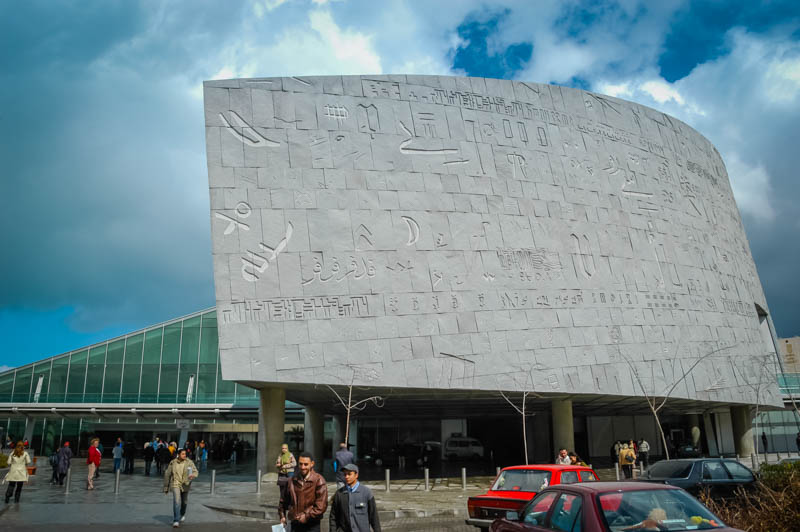Alexandria was the site of the ancient Mousieon, a temple of the muses, which was the center of learning and arts. Under Ptolemy I Soter, the schools here were built, and under his son, Ptolemy II, the great library was built.
In the first century BC, the library held over 5000 volumes, managed by the head librarian Callimahus. By the beginning of the Roman emperor’s rule, the Bibliotheca Alexandrina contained nearly a million papyrus rolls. The library had the right to copy any volume that arrived in Alexandria (from the port or trade routes) and the amount of information stored in the library was staggering for the time.

It was destroyed, of course. There is little evidence that it was burned by Christians, as one account has it, or by muslims later. Medieval europe created the myth that the library was destroyed by arabs as proof of their barbarism — and reason for the crusades — by creating an apocryphal tale that the arabs burned the library, saying, “If these writing of the Greeks agree with the Koran, they are useless and need not be preserved. If they disagree, they are pernicious and ought to be destroyed.”
The world community has recently rebuilt the library, with the intention of returning the library of Alexandria to its position as the worlds research library. UNESCO organized the rebuilding, starting in 1987 and began a competition to design the building. A NOrwegian-Austrian team of architects won, with a design that expands several stories underground with a tilted face of windows facing the sea. Nearly everything has natural light, it’s a truly amazing space.

The current library already contains millions of volumes (estimates note that the final collection will be 4-8 million volumes in nearly every language on the planet. A quick wander through the stacks revealed books in English, German, Arabic, Hebrew, French, Chinese, Spanish, and dozens of others that I didn’t recognize. They are shelved together, as well — so a book about trees in English is flanked by several others in different languages.
There are also computer terminals everywhere — this is the most ‘internet ready’ library that i have ever seen. The library catalog is available online, as well as a number of online resources. One of their stated goals is to “archive the internet” periodically to capture the data that has been posted and lost.
The basement has at least three museums, including one for rare manuscripts